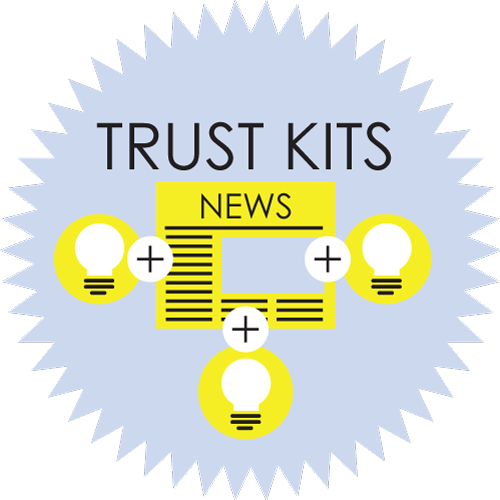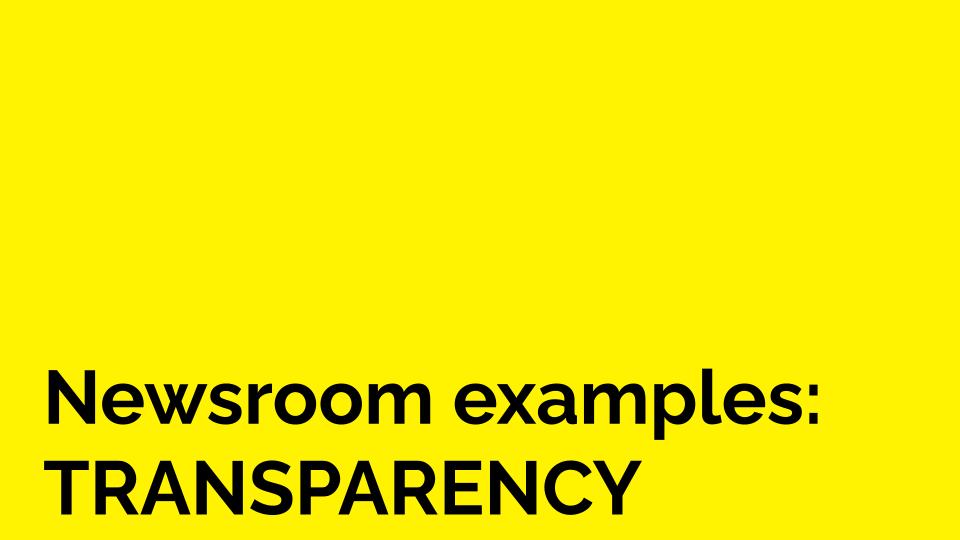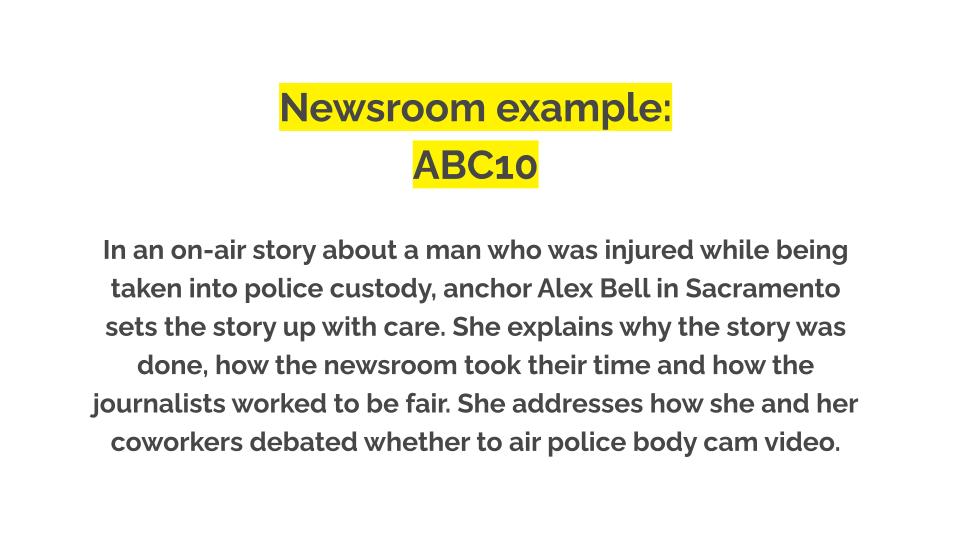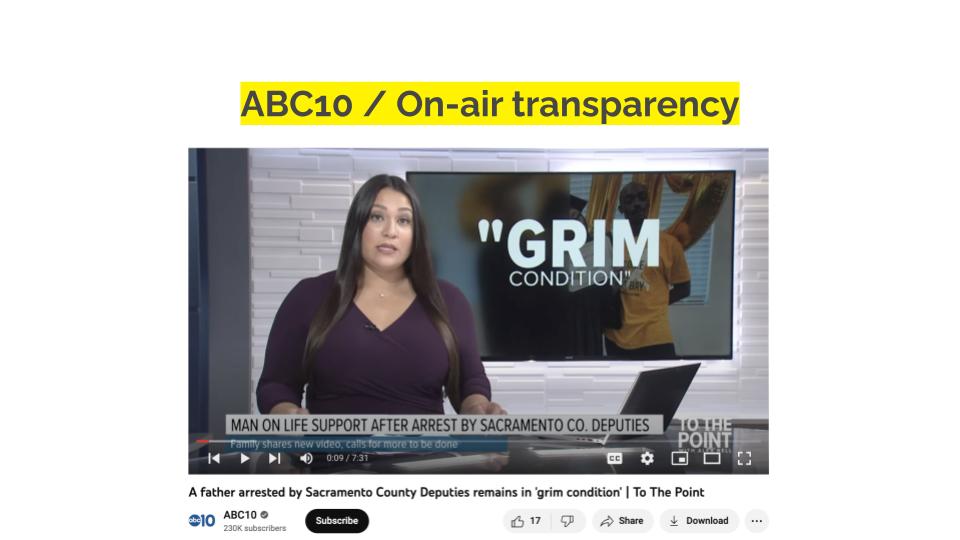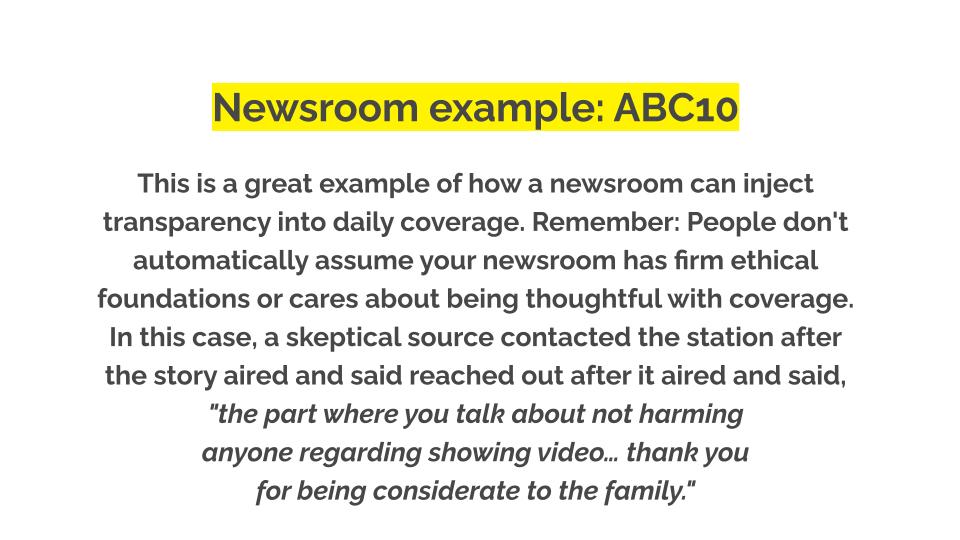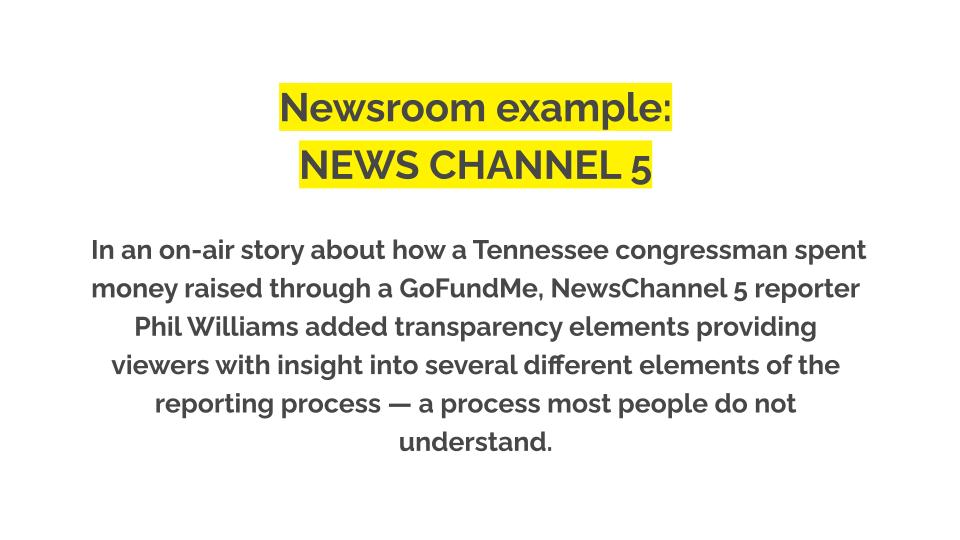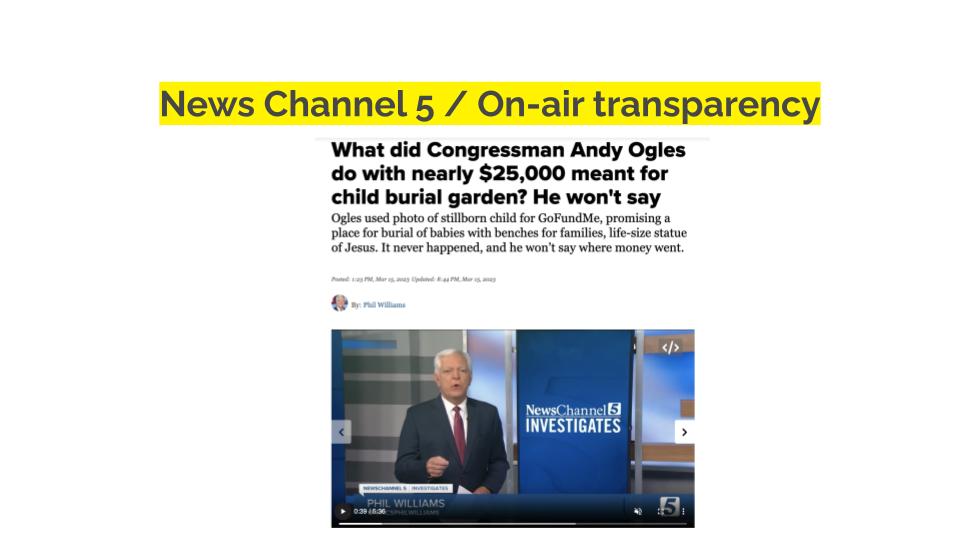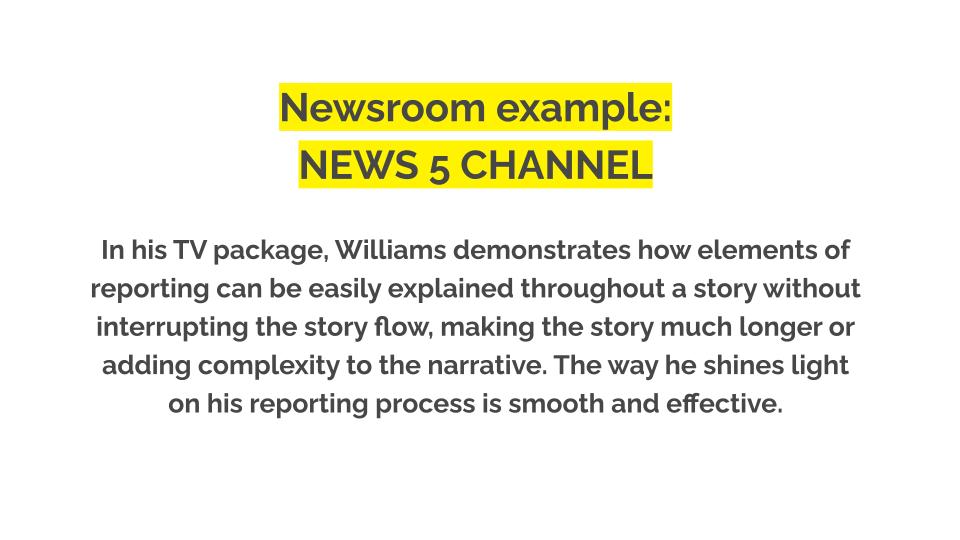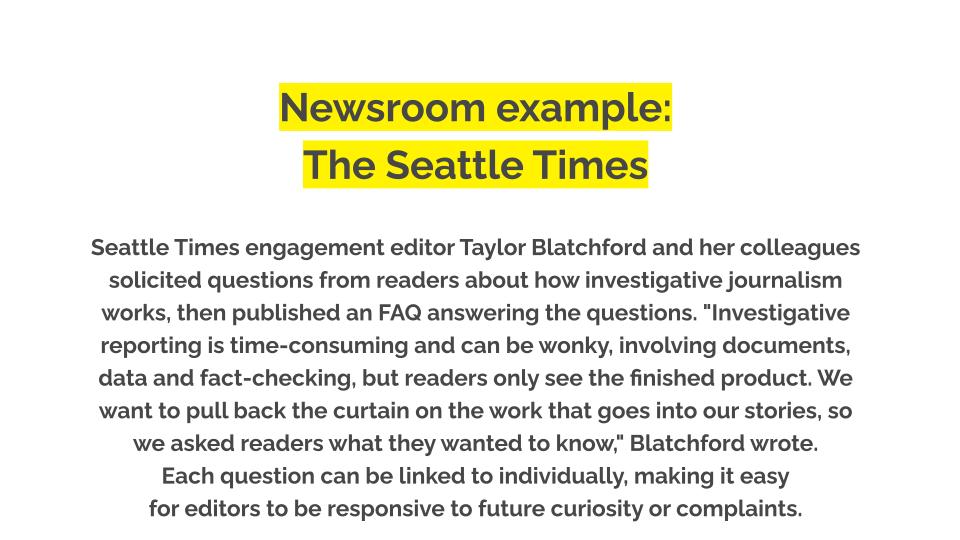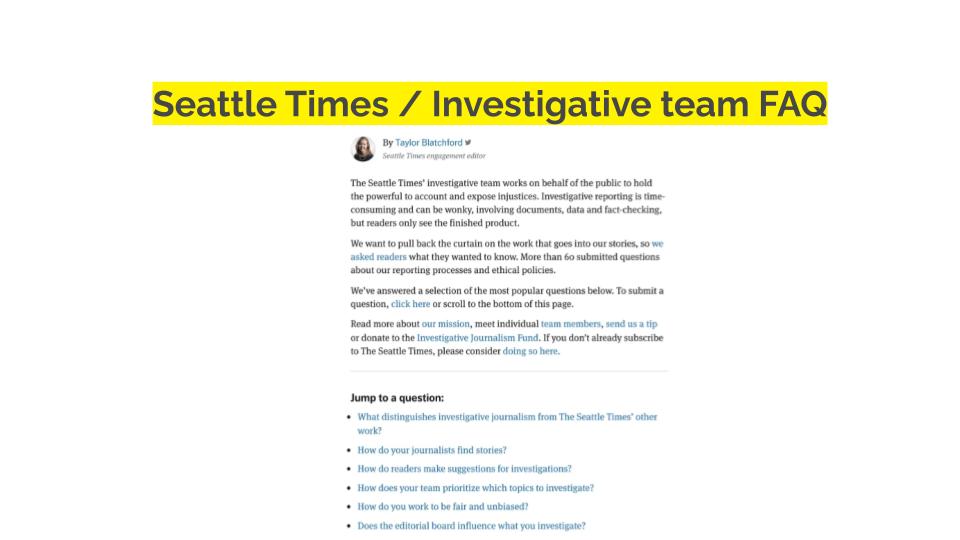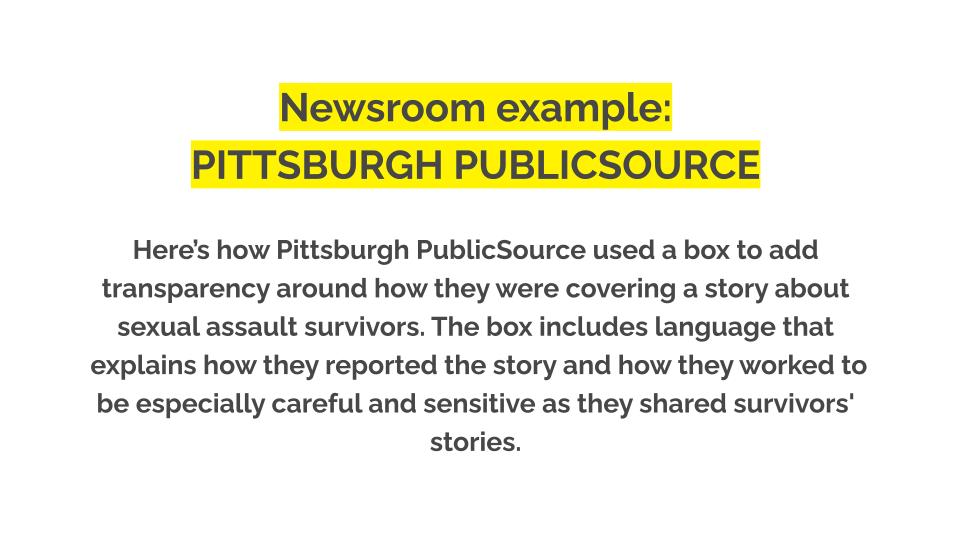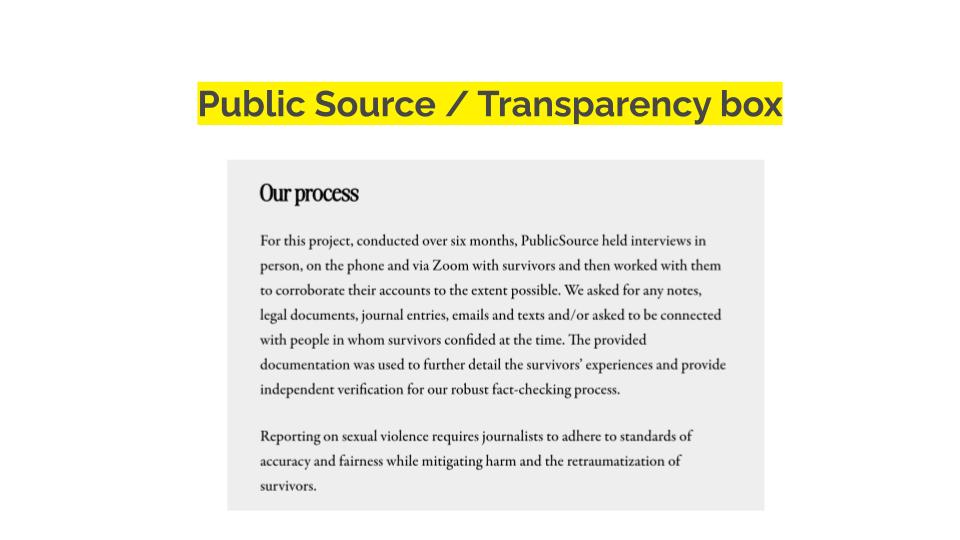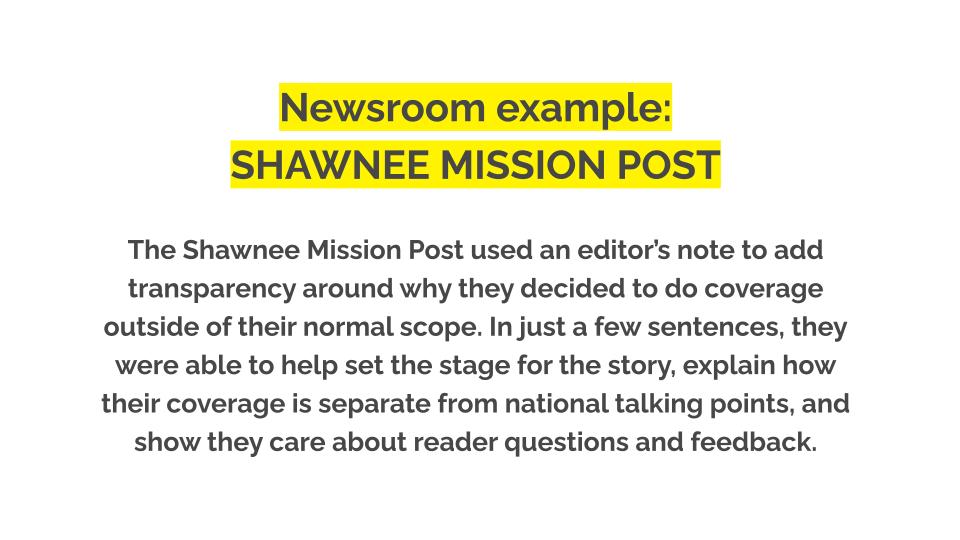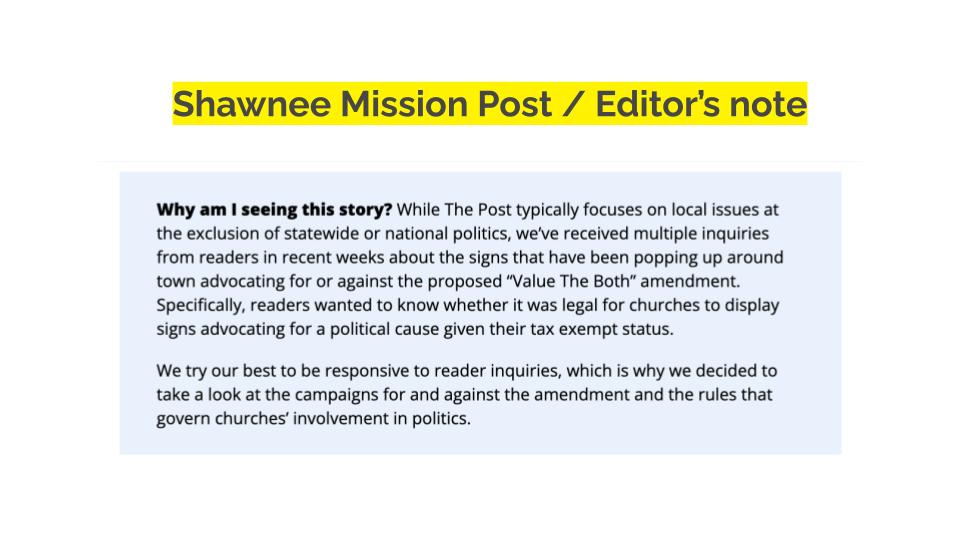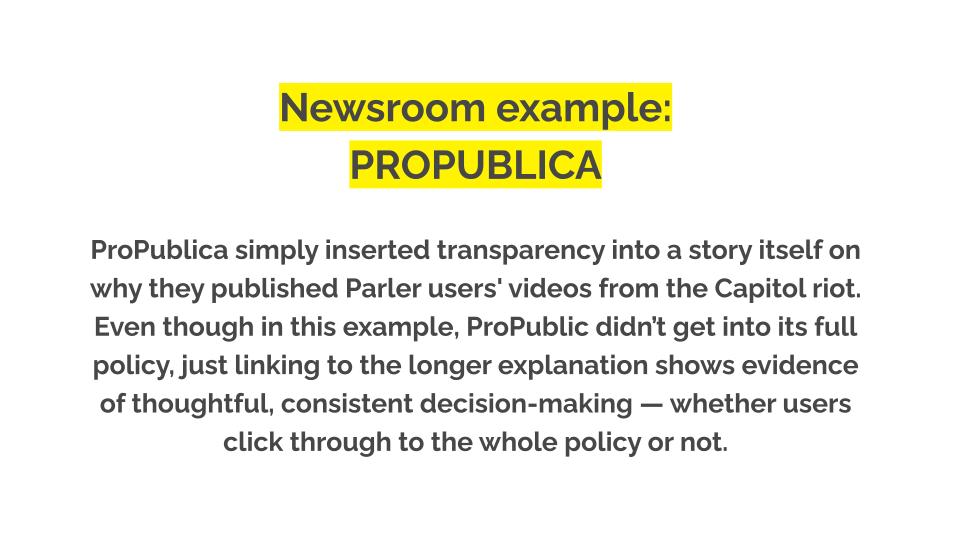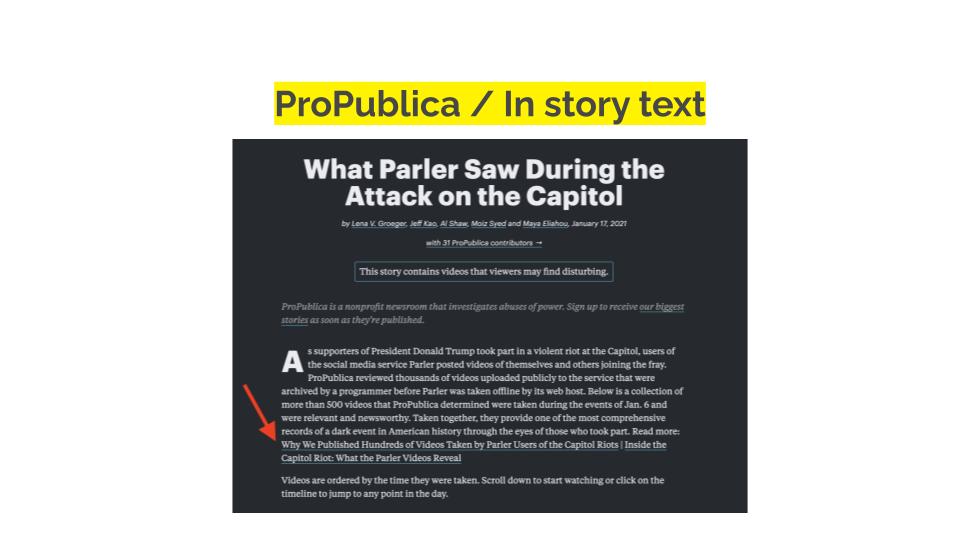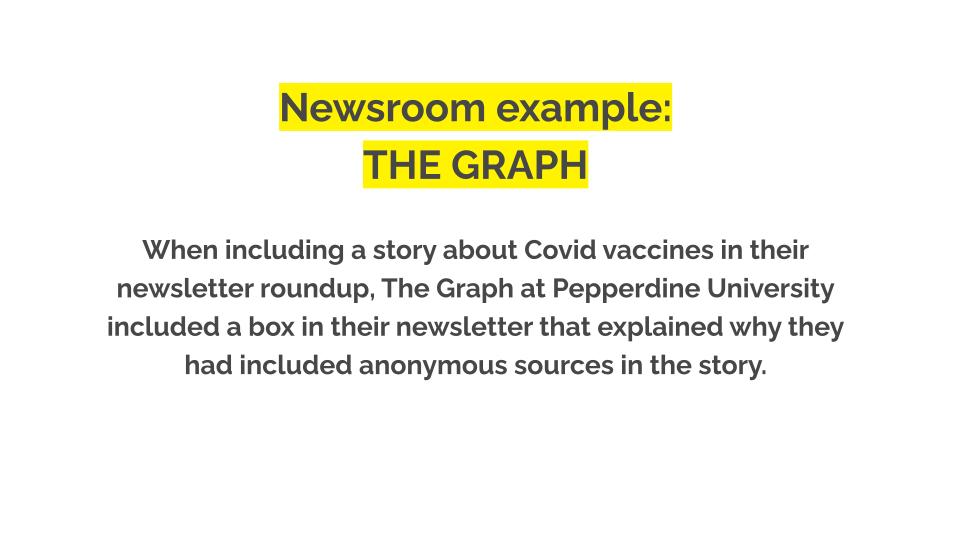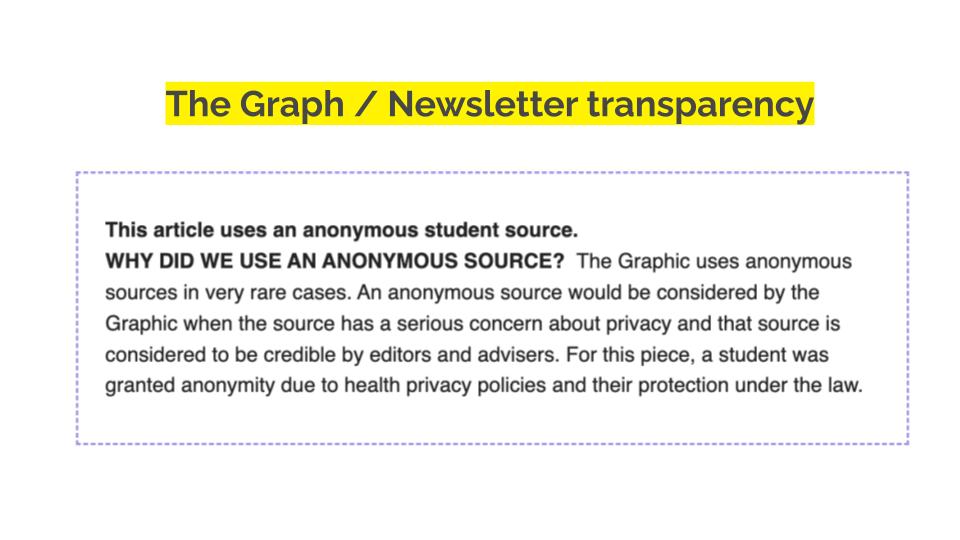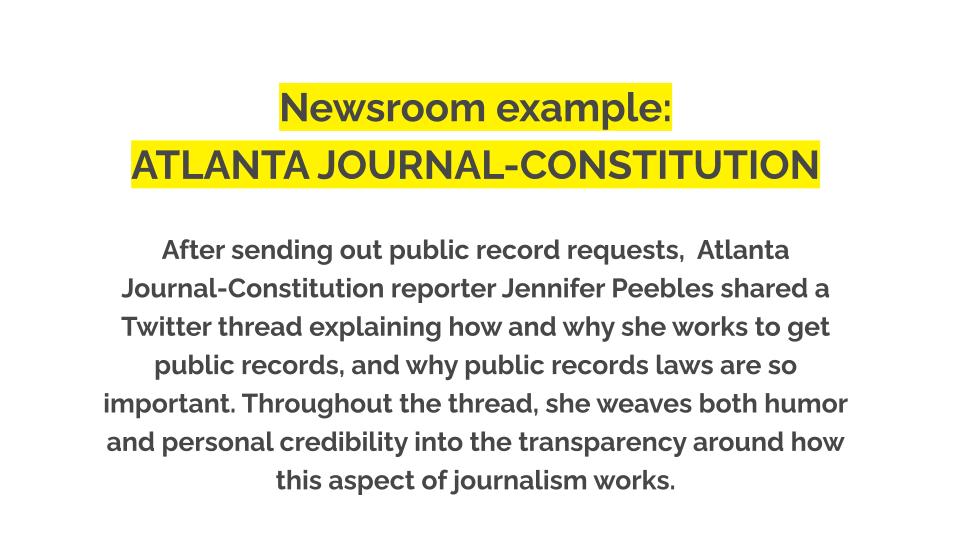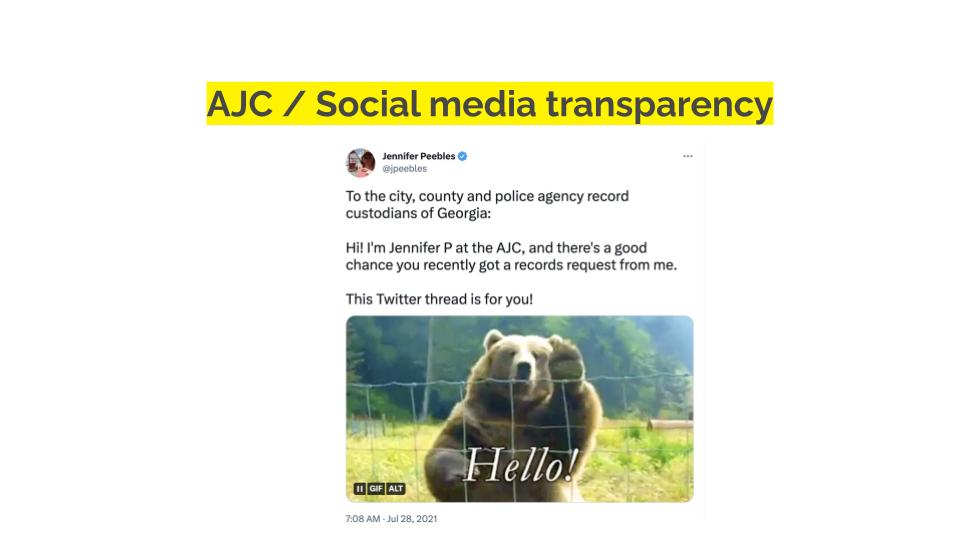ETHICS AND FAIRNESS
Transparency
Many journalists value transparency and want to be transparent with their audiences.
We know, thanks to research, that when newsrooms provide explanations and insight into the reporting process that can help people better understand your goals and motivations while also improving perceptions of your news organization. We also know this type of transparency helps prevent people from making negative assumptions about your work, which can lead to distrust.
Fundamentally, transparency elements are designed to tell your audience what you want them to know about you — your processes, your people, your motivation, your ethics and your values.
For journalists, it can be tough to picture what transparency should look like — both on a brand level and in day-to-day coverage.
This Trust Kit will walk you through how to decide when transparency elements are needed in day-to-day coverage, how to write them, and how to share them publicly with your audience.
We know giving explanations and insight into the reporting process helps improve people’s trust in news organizations. So why aren’t we seeing more transparency?

Goals
This Trust Kit helps you:
- Decide what to explain about your reporting process
- Prioritize when and where you should include transparency elements
- Determine how to share transparency elements with the public


Start here
Start by making a list of what your audience members have asked you to explain. Think about common questions or complaints you respond to or when you have to set the record straight about how you did something. Also, think what you wish they understood or knew about your reporting.
Once you have a list, start writing the answers. Keep the questions and answers in one location (like a Google doc) so they can be easily accessed and ready to add to a story.
If you have a story about a topic likely to create controversy or if it’s a story you put extra care into, consider picking one (or more) of these questions to answer:
- Why we’re doing this story: explain how you decide what stories to cover, where the story idea came from, what questions you wanted to answer through the reporting
- How we’re doing this story: explain your sourcing, fact-checking, how many days/weeks/months you worked on the story, and ethical decisions made
- What else you should know about how we work: disclose any business relationships or conflicts of interest, talk about any public records requests
Want more guidance? This quick video walks you through determining which stories would benefit most from transparency elements.
Then, share those answers publicly. We’re big fans of injecting transparency into the places where you already have people’s attention, instead of relying on a separate editor’s column or behind-the-scenes story. (And when you do write separate columns or explainers, be sure to link to them from the coverage itself!) The next section walks you through how to do this.

Where to put transparency elements
Think about how you can insert explanations in places where your user is actively consuming your news content.
Some possible ideas include:
- In a box: A simple and popular option is to add a pull-out box next to or below a text story (online or in print).
- In a note above a story: Explain a key fact about your reporting or the motivation behind your coverage in an italicized note at the top or bottom of a story.
- Within an on-air story: The conversational style of broadcast TV and radio can be a natural fit for adding process language.
- Within a text story: It’s not as awkward as you might think to add this information directly into a story, and then link to full policies/explanations from the text.
- Within a social post: Include rationale within the share text, in a thread or as the top comment.
- In newsletter text: When you invite people to click through to a story, try telling people why you invested in the coverage.
See how other newsrooms do it
Here are some examples of how newsrooms are injecting transparency in daily coverage. For more newsroom examples, check our our newsroom example database.
We’re here to help!
Congratulations on getting this far in the Trust Kit! We know taking the steps to earn trust isn’t always simple or easy. It takes time and often requires a shift in newsroom routines or workflows.
Any progress you make on implementing strategies in this Trust Kit should be celebrated as a win!
If you find yourself getting stuck, need help brainstorming, or completed the work in a Trust Kit and would like our team to review and give additional advice, reach out to us at info@trustingnews.org or send us a message on Twitter.
This Trust Kit was last updated Feb. 19, 2024.
